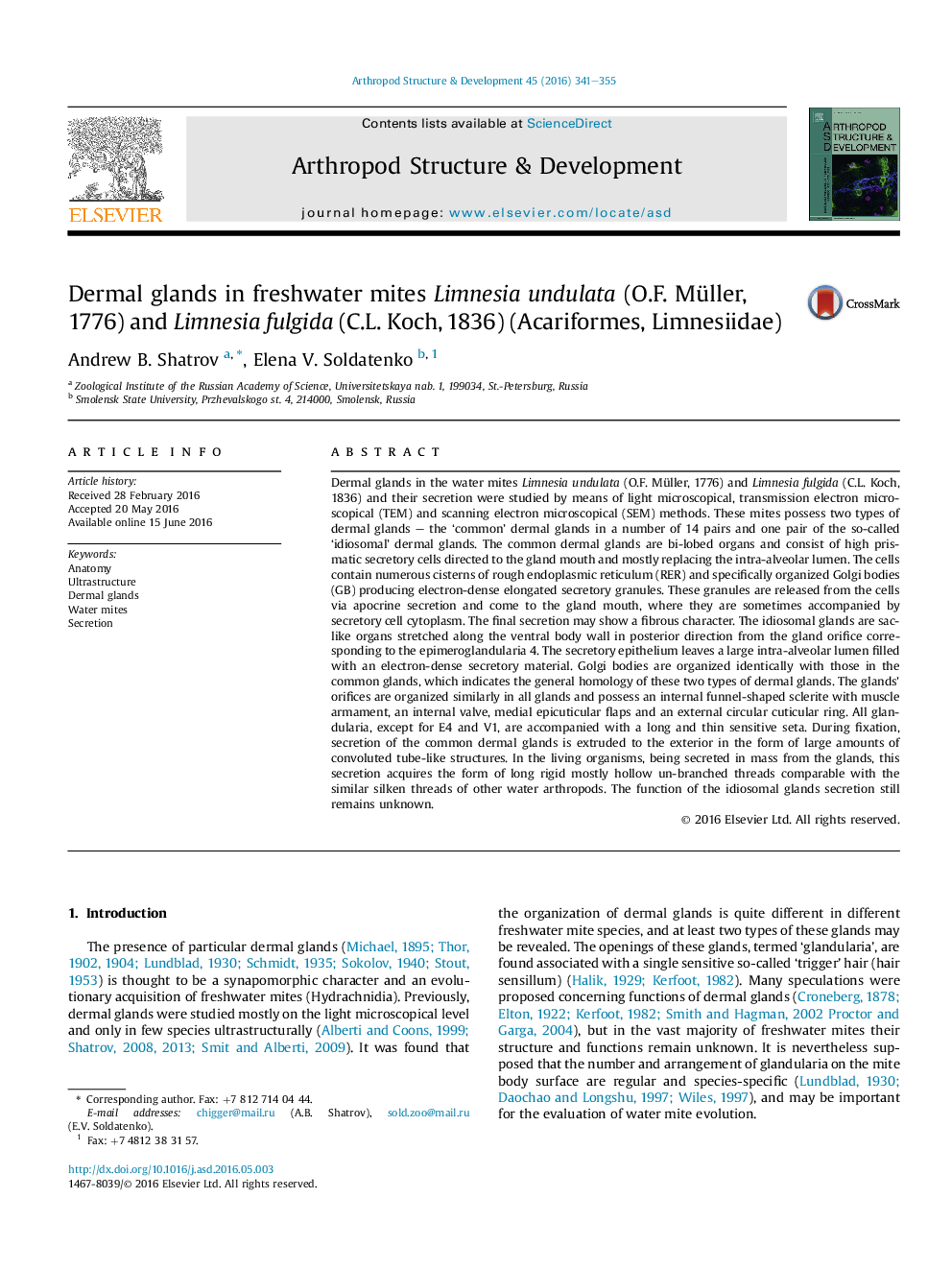| Article ID | Journal | Published Year | Pages | File Type |
|---|---|---|---|---|
| 2778480 | Arthropod Structure & Development | 2016 | 15 Pages |
•Water mites studied possess two types of dermal glands differently organized.•Golgi bodies and the glands' orifices are organized similarly that points to homology of all dermal glands.•The common glands' secretion is composed of secretory granules mixed with cytoplasm of the secretory cells and show a fibrous character.•In the living mites, this secretion acquires the form of long rigid, mostly hollow un-branched threads.
Dermal glands in the water mites Limnesia undulata (O.F. Müller, 1776) and Limnesia fulgida (C.L. Koch, 1836) and their secretion were studied by means of light microscopical, transmission electron microscopical (TEM) and scanning electron microscopical (SEM) methods. These mites possess two types of dermal glands – the ‘common’ dermal glands in a number of 14 pairs and one pair of the so-called ‘idiosomal’ dermal glands. The common dermal glands are bi-lobed organs and consist of high prismatic secretory cells directed to the gland mouth and mostly replacing the intra-alveolar lumen. The cells contain numerous cisterns of rough endoplasmic reticulum (RER) and specifically organized Golgi bodies (GB) producing electron-dense elongated secretory granules. These granules are released from the cells via apocrine secretion and come to the gland mouth, where they are sometimes accompanied by secretory cell cytoplasm. The final secretion may show a fibrous character. The idiosomal glands are sac-like organs stretched along the ventral body wall in posterior direction from the gland orifice corresponding to the epimeroglandularia 4. The secretory epithelium leaves a large intra-alveolar lumen filled with an electron-dense secretory material. Golgi bodies are organized identically with those in the common glands, which indicates the general homology of these two types of dermal glands. The glands' orifices are organized similarly in all glands and possess an internal funnel-shaped sclerite with muscle armament, an internal valve, medial epicuticular flaps and an external circular cuticular ring. All glandularia, except for E4 and V1, are accompanied with a long and thin sensitive seta. During fixation, secretion of the common dermal glands is extruded to the exterior in the form of large amounts of convoluted tube-like structures. In the living organisms, being secreted in mass from the glands, this secretion acquires the form of long rigid mostly hollow un-branched threads comparable with the similar silken threads of other water arthropods. The function of the idiosomal glands secretion still remains unknown.
